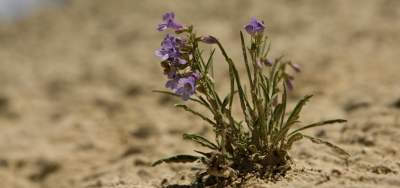
A new international report from Royal Botanic Gardens, Kew, London, has estimated that 39.4% of plants are now threatened with extinction. That’s two in five of the world’s plant species. It’s a jump from one in five plants thought to be at risk in Kew’s 2016 report. The assessment of the State of the World’s Plants and Fungi released in September 2020 is based on research from more than 200 scientists in 42 countries.
A study released last year found that the world’s plants are going extinct at 500 times faster than they naturally should. The study published in journal Nature analysed the population of more than 3,30,000 sec bearing plants around the world. It found that almost 600 plant species have been lost from the wild in the last 250 years. It listed India as among the places with particularly high extinction rates. The other places included the islands of Hawaii, the Cape Provinces of South Africa, the island of Mauritius, Australia and Brazil.
The problem with our understanding of plants is there are a whole lot of them and many still remain unknown to science. Scientists suggest that there may be more plants that we don’t know of at risk of extinction. After all about 2,000 plants are discovered every year Kew garden experts sail they are now in a race against time to find and identify species before they are lost.
Threats to plants
Some of the major threats to plants are habitat loss, fragmentation environmental degradation, pictures species pollination, and climate change.
- Humor activities that lead to habitat loss include Cutting down of forest, urbanization and conversion of forests to agricultural land
- People patterns of settlement, transportation, recreation, and use of natural resources directly or indirectly lead to environmental degradation.
- Loss of pollinators such as insects, birds and small mammals leads to loss of plants and vice versa.
- Over exploitation of plants (for horticulture and medicine) and trees (for construction and industries) can make it harder for species to rebound.
- Introduction of invasive species when plants and animals that are not native to a region are introduced to the ecosystem, they can cause serious damage to the local plants and potentially contribute to their extinction.
Why do plants matter?
- Directly or indirectly, all life on Earth depends on plants.
- Plants provide the oxygen we breathe and the food we eat.
- Plant extinctions can lead to a whole cascade of extinction in other organisms that rely on them.
- We rely on plants to cure a wide range of ailments- from cancer to diarrhea. Plants have also inspired thousands of synthetic medicines over the last few decades.
Have you heard of plant blindness?
If we ask you to list some endangered species (or your favourite species for that matter) chances are you would remember more animals than plants. Although plants are far more important to us, the conservation of plants has not generated the sense of urgency that drives the conservation of animals.
Our tendency to underappreciate the flora around us is called Plant Blindness. Two US botanists Elisabeth Schussler and James Wandersee, coined the term in 1998. They described it as the inability to see or notice the plants in one’s own environment.
Plant blindness is a form of irrational bias. Scientists have suggested that the reason some people don’t notice plants is because a majority of them are stationary and similarly colored, although some researchers have suggested that it is an influence of cultural practices. Urbanization could be driving this attitude. With less exposure to plants, one tends to acquire plant blindness. This is a matter of concern because plant blindness can affect the importance given to plant conservation.
Picture Credit : Google




